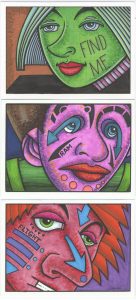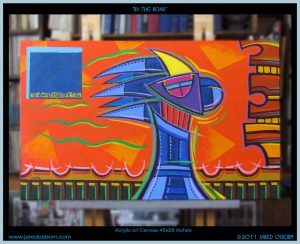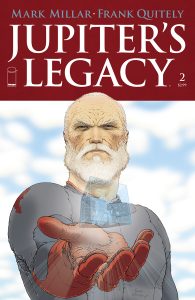I’ve written before about how I’m a sketchbook junkie. I like books in general, I like drawing, and so I like making books of drawings. It’s not as easy as you’d think though. It’s not always the best choice to make a drawing in a book rather than on a sheet of paper. I’d say it’s usually the wrong choice. I have my inkbook sketchbooks that I’ve been drawing in for years. Those are simple enough in that I draw little ink drawings in them. Each 5.5×8.5 inch book has a hundred pages in it and it takes me a year to fill one. But I also have about a half dozen other sketchbooks for various tasks at any given time. Those tasks take a while and a sketchbook usually doesn’t get finished until it finds its specific purpose. Some never find a purpose.
I have a couple of blank sketchbooks that have been sitting on my shelf for about a year. I bought them both just because they were cool and I thought that, maybe, I could find a use for them. That’s what a sketchbook needs for me to fill it up. A use. The first of these two is an 8×5 inch watercolor sketchbook. It’s a beautiful book. It has a hardcover but opens up nice and flat and is filled with good watercolor paper. It’s made for traveling around and doing watercolor sketches in. Except I never do that. It’s such a cool book though I’ll have to find something to do in it. That’s what I keep telling myself.
The second sketchbook is a small but thick 3×4 inch sketchbook. I’m really not sure what I could ever use it for but it was only a few bucks so I threw it in with the rest of a big art supply order. It doesn’t open up very flat but is easy to carry. I’m sure it would have been more useful in my commuting days.
In checking on my shelf for these two sketchbooks I notice two more blank ones that I forgot about. One is a 5.5×3.5 inch watercolor sketchbook just like the bigger one I remembered I had. Once again this would come in more handy if I did watercolors on the road but I don’t. The forth sketchbook is a “Mixed Media Visual Journal”. It’s 5.5×8 inches, has a spiral binding, and is filled with 90lb paper. The paper isn’t as nice as in the watercolor sketchbooks but it will stand up to wet media. I might find a use for this one first because I like spiral bindings on my sketchbooks. They don’t look the prettiest but they are the easiest to work in.
I did finish up one sketchbook about a month ago. That’s because it had a purpose. It’s a hardcover spiral bound 5.5×8.5 sketchbook that I’ve been doing drawings for my “Message-Tee” comic in. On every page I drew a single figure that I eventually scanned in, inked, colored, and then added type to. The first drawing was done on 1/17/12 and the ninety ninth drawing was done on 6/26/13. I had to add a couple of more loose drawing in to get fifty two cartoons a year in. As you can see it took time to fill up the book but since I had a use for it it got done.
This whole sketchbook blog was inspired by another sketchbook that I pulled out recently and did a little drawing in. It’s one that almost had a purpose but things didn’t work out for it. It’s a “PresentationZen Storyboarding Sketchbook”. It’s one of these gimmicky sketchbooks that’s really not for me but is for someone who needs a little help to get organized and inspired. Some pages have inspirational quotes on them and some pages have little printed storyboard boxes on them. There was also a whole story about the book from the guy who designed it on how to use it. It piqued my curiosity so I got one.
The first page that I drew on in the Zen sketchbook is dated 5/23/11. There is a lot of writing on the page too. My original concept for this sketchbook was to make it a sort of crazy looking idea book. Just for fun I had recently purchased this little printer that printed stickers (It was in the clearance bin) and wanted to find a use for it. I printed some 2×3 inch stickers of my street photos and stuck them on some blank pages. I then wrote down some ideas for stories, drew some little drawings, and even drew on the photo stickers. It looks really cool except I never got one useful idea out of the book. It looks like I only drew four pages in it in 2011, fourteen pages in it in 2012, and three or four pages this year.
I did get a few character designs out of this sketchbook last year. I remember designing my three robots for a strip I never made and the initial designs came from this book. I had nearly abandoned the whole writing as part of the sketchbook idea and had been drawing tiny little character designs. Sometimes I draw really small if I want to strip away everything extraneous from a design. Details can be distracting when all I want is basic shapes.
When I pulled this sketchbook out about a week ago for the first time this year I had used up all the pages that had my street photos stuck to them. I filled up a couple of pages with small drawings of robot-like things. No writing, no photos, and no color at all. It looks kind of boring. I think I’m going to have to dig out that little sticker printer of mine and see if I have any paper left for it. Those street photos really didn’t serve much purpose but at least they made the sketchbook look a little more interesting. Even if the sketchbook hasn’t found its purpose quite yet I’d still prefer it to be interesting.







